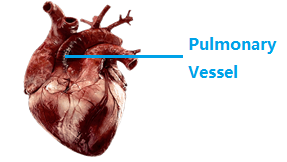
1) Using iron-based materials with good biocompatibility to improve the radial support strength while significantly reducing the thickness of the scaffold;2) Innovation of surface composite coating:Polylactic acid coating: accelerate the corrosion of the iron and reduce the production of solid corrosion products;Zinc corrosion inhibition layer: zinc corrosion inhibition layer is introduced between the scaffold matrix skeleton and the polylactic acid coating to slow down the early corrosion rate of the iron matrix. In the early stage, the effective mechanical support can be maintained and the early fracture of the scaffold can be avoided.
A) it avoids the short-term and long-term risks associated with the permanent retention of the implant in the body, such as long-term inflammation, displacement and restenosis caused by the long-term stimulation of foreign bodies;B) long-term dual antibody is not required to reduce the financial burden of patients and the risk of bleeding disease;C) avoid the risk of stimulation or even perforation of blood vessels caused by long-term fatigue fracture;D) to avoid long-term inflammation, displacement and restenosis caused by long-term stimulation of foreign bodies;E) medical examination, the degradation of the stent does not affect imaging examination such as MRI, CT, etc.;F) small profile, small external diameter stent can be implanted with 4F conveying sheath, which will not cause damage to the blood vessels of infants;G) the degradation of iron-based absorbable stents makes it easier to perform Ductus arteriosus ligation, and can even avoid the trauma and surgical risk to the patient caused by the removal of the stents by reoperation;H) after the degradation of iron-based absorbable scaffolds, the development of pulmonary blood vessels will no longer be bound and thickened. Patients do not have to bear the trauma, pain and economic loss of having to undergo secondary intervention to reexpand or surgical removal of the stents after the implantation of permanent metal stents.
A)the safety and efficacy were inferior to that of the early stage of the permanent stent, and the incidence of thrombosis in the middle stage was higher than that of the permanent stent;Limited plasticity;Acute retraction;Poor overexpansion performance; higher strut thickness..B) few specifications: due to the limitation of the properties of the intrinsic materials of polylactic acid, on the premise of ensuring the mechanical properties, the scaffold is relatively thick with few specifications, which can only cover 8% or even lower patients with simple lesions in the permanent stent group.C) strict operational requirements: due to the limitation of the properties of polylactic acid intrinsic materials and the poor mechanical properties of scaffolds, polylactic acid scaffolds can only be applied to simple lesions, while for highly calcified blood vessels, it is necessary to remove calcified plaques in advance to put scaffolds;Adequate balloon predilation was performed on the diseased vessels before stent implantation, and the stent should be slowly expanded, otherwise the stent will break.D) polylactic acid scaffold double resistance for a long time, not only increase the cost, but also bring bleeding complications.E) high storage and transportation requirements
